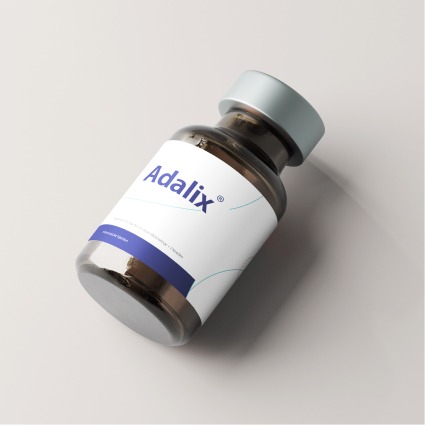Abstract
This paper presents an in-depth analysis of the burgeoning biosimilar market in the Middle East, focusing on its growth, regulatory frameworks, and the challenges and opportunities therein. The study examines the market’s projected expansion, with a compound annual growth rate of approximately 3.9%, and its regional healthcare implications. Key regulatory practices across different countries are analyzed to understand the market’s diverse landscape. The paper also discusses regulatory inconsistencies, pricing, and market access, proposing solutions to foster market growth.
Introduction
The Middle East, a region historically rich in resources and culture, is now emerging as a key player in the global healthcare industry, particularly in the biosimilar market. The biosimilar market in the Middle East and North Africa (MENA) region was valued at USD 0.88 billion in 2023 to USD 2.70 billion by 2028, at a CAGR of 24.96%. This paper aims to dissect the factors driving this growth, scrutinize the regulatory environments across different regional countries, and explore the market’s challenges and opportunities. By doing so, it seeks to provide a comprehensive understanding of the Middle East’s biosimilar market, its current state, and prospects.
The Growth of the Biosimilar Market in the Middle East
Market Size and Projections
The biosimilar market in the MENA region is witnessing a significant expansion. The market’s growth was valued from USD 0.88 billion in 2023 to USD 2.70 billion by 2028, at a CAGR of 24.96%. This growth is largely attributed to the rise in GDP and healthcare expenses within these countries, coupled with the escalating demand for more cost-effective therapeutic solutions.
Economic and Healthcare Implications
The burgeoning biosimilar market in the Middle East has profound economic and healthcare implications. Biosimilars, offering similar efficacy to original biologics at a reduced cost, are poised to be crucial in minimizing public healthcare expenditure on medicines. This, in turn, increases the accessibility of these advanced treatments to a broader population segment, particularly in managing chronic diseases like diabetes and cancer, which are prevalent in the region.
Regulatory Landscape in MENA and GCC Countries
Overview of Regulatory Frameworks
A patchwork of regulatory frameworks marks the biosimilar market in the MENA and GCC regions. Each country has developed its guidelines and regulations, reflecting varied stages of maturity and alignment with international standards. This diverse regulatory landscape presents challenges and opportunities for companies entering these markets.
Country-Specific Regulations and Guidelines
Egypt
Egypt’s regulatory framework for biosimilars includes specific decrees and guidelines, demonstrating a comprehensive approach to biosimilar governance. This includes adopting standards from the EMA and U.S. FDA, showcasing an effort to align with international best practices.
Saudi Arabia
As a leading pharmaceutical market in the MENA region, Saudi Arabia has established a detailed regulatory framework for biosimilars, including guidelines for quality considerations and drug master file requirements. The Saudi Food and Drug Authority (SFDA) is pivotal in reviewing and approving biosimilars, following models set by the EMA and U.S. FDA, adapted to local and regional needs.
Oman
Oman’s approach to the biosimilar market indicates its broader ambition to enhance its healthcare sector and contribute to the global pharmaceutical industry. While specific details of Oman’s regulatory framework for biosimilars are not as extensively documented as in some other countries, it is understood that the country is making strides towards establishing more comprehensive guidelines and procedures. This includes aligning with international standards to ensure biosimilar products’ safety, efficacy, and quality. Oman’s progress in the biosimilar market is exemplified by the emergence of companies like Opal Bio Pharma, which are playing a significant role in developing the biopharmaceutical sector in the country.
United Arab Emirates
The UAE’s biosimilar regulation approach is evolving, with the Ministry of Health and Prevention working towards national guidance. In the interim, biosimilar registrations are assessed case-by-case, adhering to WHO and EMA standards.
Challenges and Solutions in Regulatory Frameworks
One of the primary challenges in the MENA and GCC biosimilar markets is the absence of well-established, unified regulatory frameworks tailored specifically to biosimilars. This lack of consistency can lead to varied approval processes and quality standards across countries. Adopting international standards such as those set by the EMA, U.S. FDA, or WHO is a viable solution to these challenges, providing a more harmonized approach to biosimilar regulation in the region.
Challenges in the Biosimilar Market
Pricing and Reimbursement Issues
The biosimilar market in the Middle East faces challenges in pricing and reimbursement, primarily due to the price-conscious nature of most health systems in the region. Establishing appropriate pricing mechanisms for biosimilars involves complex negotiations with healthcare authorities and payers, with drug prices and clinical outcomes influencing reimbursement decisions.
Pharmacovigilance and Market Access
Effective monitoring of biosimilars post-market approval is crucial for ensuring safety. However, some countries in the Middle East may lack the necessary pharmacovigilance infrastructure and expertise. Additionally, establishing distribution channels and ensuring the widespread availability of biosimilars presents logistical challenges, particularly in geographically dispersed countries.
Political and Economic Factors Influencing the Market
Political instability, economic challenges, and variations in healthcare systems across Middle Eastern countries can significantly affect biosimilars’ regulatory environment and market dynamics. These factors necessitate adaptable, case-by-case solutions to navigate the complex biosimilar market landscape.
Opportunities and Future Directions
Innovations and Advancements in Biosimilar Development
The growing biosimilar market in the Middle East offers opportunities for innovation and advancement. As countries in the region enhance their healthcare infrastructure and regulatory frameworks, there is potential for increased development and production of biosimilars, catering to local and global needs.
Potential for Market Expansion and Accessibility
The expansion of the biosimilar market in the Middle East is poised to increase the accessibility of advanced treatments. This growth provides an opportunity to address a larger population’s healthcare needs, especially in managing chronic diseases prevalent in the region.
The Role of Emerging Market Players
Emerging market players, like Oman’s Opal Bio Pharma, are beginning to make their mark in the biosimilar landscape. While not at the forefront, companies like Opal Bio Pharma contribute to the diversification and advancement of the market. Their efforts in developing vaccines, biosimilar medicines, and treatment methods, particularly for oncology and immunology, signify a step towards raising the medical industry’s standards in the region.
Conclusion
The biosimilar market in the Middle East, currently experiencing significant growth, stands at the cusp of transformational change. With a projected market value exceeding USD 2.70 billion by 2028, this region is rapidly becoming a pivotal player in the global biosimilar landscape. The growth is driven by economic expansion, increased healthcare spending, and a pressing need for cost-effective therapeutic solutions, particularly for chronic diseases like diabetes and cancer.
However, the market faces challenges, including diverse regulatory frameworks, limited access to reference biologic products, complex pricing and reimbursement scenarios, and developing pharmacovigilance systems. Political and economic variances across the region further complicate these issues. Despite these challenges, there are substantial opportunities for growth and development. Innovations in biosimilar development and improved regulatory practices and infrastructure promise a future where advanced treatments are more accessible and affordable.
Emerging market players, such as Opal Bio Pharma from Oman, are beginning to contribute to this evolving market. While not leading the market, these companies are crucial in diversifying the biosimilar landscape and enhancing the region’s medical industry standards. Their focus on developing treatments for critical health issues like cancer and immunological diseases aligns with the broader goals of the regional healthcare sector.
In conclusion, the biosimilar market in the Middle East is a dynamic and evolving sector poised for substantial growth and development. It promises to make high-quality, cost-effective healthcare solutions more accessible to a larger population, thereby transforming the region’s healthcare landscape.

